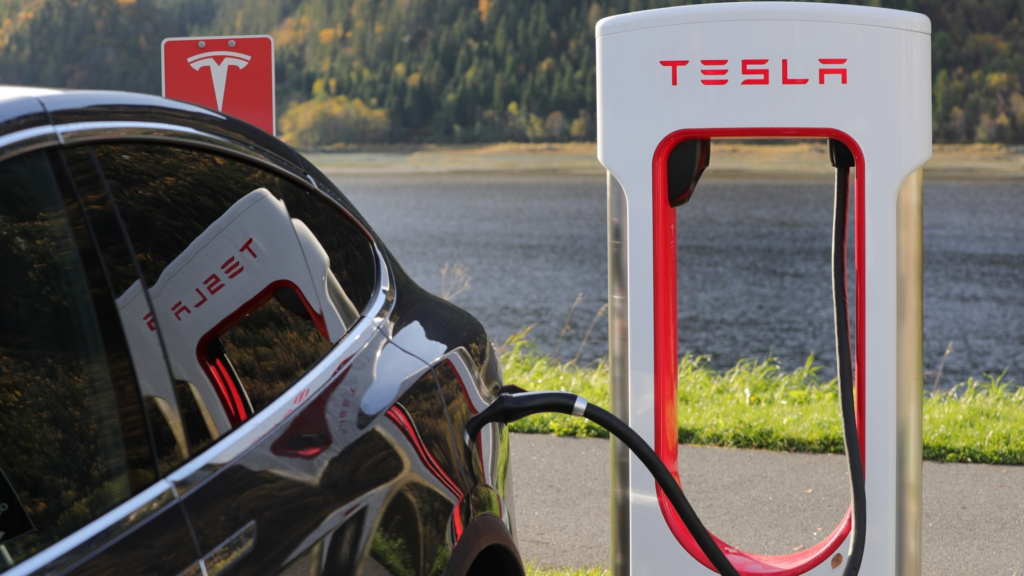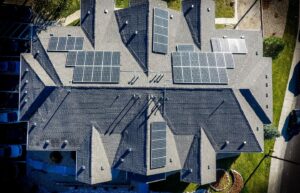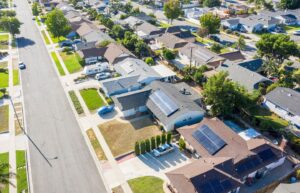Did you know that you can charge your Tesla using solar power? It’s true! By harnessing solar energy, you can fuel your electric vehicle while reducing your carbon footprint and reliance on grid electricity. Imagine cruising down the streets of Boulder, Colorado, in your Tesla, knowing that every mile is powered by clean and sustainable energy.
With solar charging stations and home installations becoming increasingly popular, it’s easier than ever to make the transition to this eco-friendly solution. Not only will you save money on fuel costs, but you’ll also contribute to a greener future for our planet.
The combination of solar power and electric vehicles, such as Tesla cars, is revolutionizing transportation. As more people recognize the benefits of renewable energy sources like solar, we’re witnessing a shift towards sustainable solutions for charging electric automobiles, including the use of Tesla Powerwalls.
From home installations to public charging stations across Boulder, CO, we’ll uncover everything you need to know about powering up your electric vehicle with the sun’s energy and utilizing Tesla chargers.
So, how many solar panels does it take to charge a Tesla?
Let’s dive in and discover how home charging with solar panels can keep your electric car charged without compromising on performance or convenience!
Tesla’s Energy Requirement and Solar Energy Systems
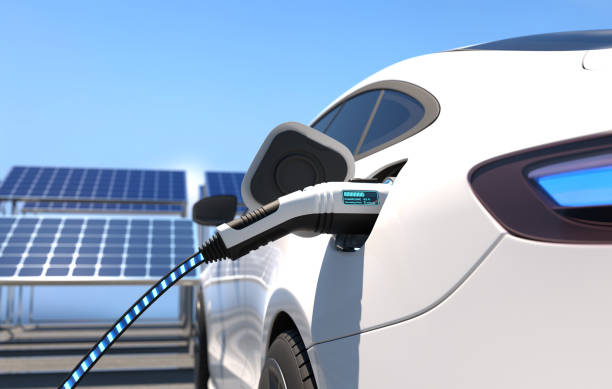
Understanding the Energy Needs of Different Tesla Models
Understanding the energy needs of Tesla models is crucial in determining the number of solar panels required to charge their battery capacity. Each Tesla model has varying power consumption, which directly affects the amount of electricity needed for charging.
For example, a Tesla Model S Long Range with an estimated range of 405 miles consumes approximately 33 kWh per 100 miles driven, while a Tesla Model 3 Standard Range Plus with an estimated range of 263 miles consumes around 24 kWh per 100 miles driven.
Overview of Solar Energy Systems and Their Capacity to Power Teslas
Solar energy systems, including home charging options and the Powerwall, have gained popularity as reliable sources of renewable energy. These solar panels harness sunlight and convert it into electricity, measured in watts, through photovoltaic cells.
The electricity generated can be used to power various appliances, including electric cars like Teslas. The capacity of a solar energy system depends on factors such as the size of the solar panel system, its efficiency, and the amount of sunlight received.
Matching the Energy Demand of Teslas with Solar Panel Capabilities
To determine the number of solar panels needed to adequately charge an electric car like a Tesla, one must consider the power output from the panels and the vehicle’s power consumption.
A typical residential rooftop solar system in Boulder, Colorado (Boulder, CO) consists of around 20–30 solar panels with an average capacity ranging from 5 kW to 7 kW. However, this may vary depending on factors such as available roof space and individual preferences for power conversion.
Considering that a Tesla Model S Long Range requires approximately 33 kWh per 100 miles driven, let’s assume an average daily driving distance of 40 miles for simplicity. This would mean that approximately 13 kWh (33/100*40) would be needed to charge the vehicle fully each day.
With a powerful 7 kW solar power system and an efficient power wall, the panels could generate around 28 kWh per day under optimal conditions. This would be more than enough electricity to charge the Tesla using an EV charger and provide additional energy for household use.
The Role of Efficient Solar Energy Systems in Meeting Tesla’s Charging Requirements
Efficiency is key when it comes to charging your Tesla car. By investing in high-quality solar panels and an optimized solar power system, Tesla owners can ensure that their vehicles receive sufficient charging capacity from the powerwall. An efficient solar energy system maximizes the amount of sunlight converted into electricity, allowing for greater kilowatt-hours (kWh) output.
Moreover, utilizing a powerwall battery system alongside the solar panels can help store excess electricity generated during the day for later use during peak charging times or at night when sunlight is unavailable. This ensures a continuous supply of clean energy to charge Teslas without relying solely on grid power. The installation of the powerwall charger allows for efficient use of stored kWh.
Cost of Charging a Tesla: Solar Panels vs. Grid
One of the main considerations for owners of Tesla vehicles is the cost. We will also analyze the financial benefits of investing in a PV system specifically for Tesla car owners, including charging Tesla cars.
Comparing Long-Term Cost Savings
Charging a Tesla with a solar-powered PV system and a Powerwall can significantly reduce long-term costs compared to relying solely on grid electricity. By harnessing the power of the sun, you can lower or even eliminate your dependence on expensive utility rates.
The average cost per kilowatt-hour (kWh) in Boulder, Colorado, is around 13 cents from the grid while installing solar panels can bring this cost down significantly. This is especially beneficial for meeting daily energy requirements and powering your Tesla for miles.
By generating your own electricity through a photovoltaic (PV) system, you can potentially save thousands of dollars over time on power consumption. With proper installation and efficient use, solar panels have a lifespan of 25–30 years.
This means that once you’ve covered the initial investment, you’ll enjoy virtually free energy for your Tesla throughout its lifetime, saving on kilowatt-hours (kWh). Additionally, considering the use of a Powerwall can further optimize your power consumption.
Evaluating the Payback Period
Investing in solar panels to charge your electric car, such as a Tesla, requires an upfront investment. However, it’s essential to evaluate the payback period to understand when you’ll start reaping financial benefits from your investment in terms of reducing your electric bill.
The payback period depends on various factors, such as the size and efficiency of your solar panel system and any local incentives or tax credits available. Additionally, considering a powerwall can help optimize power consumption and further enhance the benefits of your solar panel investment.
In Boulder, Colorado, where renewable energy is encouraged and supported by incentives and tax credits, many homeowners find that their payback period for their PV system ranges between 5 and 10 years. After this period, every kilowatt-hour (kWh) their solar panels generate becomes pure savings compared to paying for grid electricity. This is especially beneficial for charging a Tesla with the Tesla Powerwall.
Potential Incentives and Tax Credits
Installing solar panels not only offers long-term savings on your electric bill but also provides potential incentives and tax credits that can offset the initial installation cost of a PV system.
In Boulder, Colorado, homeowners who install solar panels are eligible for federal tax credits, which can cover up to 26% of the total installation cost of a Tesla powerwall. Local rebates or incentives may be available that further reduce the financial burden of charging a Tesla.
Taking advantage of these incentives and tax credits can significantly decrease the overall cost of installing a PV system, making it a more financially viable option for charging your electric car and reducing your electric bill. Additionally, pairing your PV system with a powerwall can provide even more benefits for storing excess energy.
Calculating Solar Panel Requirements for Tesla Models
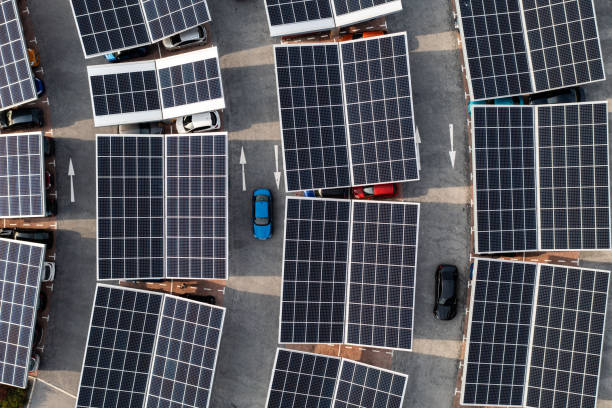
One of the most common questions is, “How many solar panels does it take to power a Tesla electric car?” The answer depends on several factors that influence the calculation of the required solar panel capacity for different Tesla models, such as the Powerwall and PV system. Let’s dive into these factors and understand how they impact the number of solar panels needed to reduce your electric bill.
Factors Influencing the Calculation of the Required Solar Panel Capacity for Different Tesla Models
- Mileage: The mileage you cover with your Tesla plays a crucial role in determining the number of solar panels required. If you have a longer daily commute or frequently embark on road trips, you’ll need more panels to generate enough energy to charge your car consistently.
- Battery size: Different Tesla models come with varying battery sizes, which directly affects their charging requirements. Models like the Model S Long Range have larger batteries and will require more solar panels compared to smaller battery-equipped models like the Model 3 Standard Range Plus.
- Driving habits: Your driving habits also impact how much energy your Tesla consumes and, consequently, how many solar panels are necessary to meet its charging needs. Aggressive driving or frequent acceleration can increase energy consumption, requiring additional solar panel capacity.
Understanding How Mileage, Battery Size, and Driving Habits Impact Solar Panel Requirements
To accurately calculate the number of solar panels needed for your home, it’s essential to consider all three factors: Tesla powerwall, electric bill, Tesla model, and electric car.
- Start by assessing your average daily mileage.
- Determine your Tesla model’s battery size.
- Consider any specific driving habits that might affect energy consumption in your electric car. This can have an impact on your electric bill, as the amount of kilowatt-hours (kWh) used will vary based on how much you drive. Additionally, if you have access to solar power, you can further reduce your reliance on the grid for charging your electric car.
Once you have this information, you can utilize online tools or seek professional assistance from local solar power experts in Boulder, Colorado, who specialize in renewable energy solutions.
These solar nerds often provide comprehensive calculators that take into account various parameters, such as solar output and sunlight availability in Boulder, as well as other relevant data specific to your location.
Utilizing Online Tools or Professional Assistance to Determine the Optimal System Sizing for Charging Teslas with Solar Power
Online tools and professional assistance can simplify the calculation process and help you determine the ideal number of solar panels required to charge your Tesla electric car. These resources consider additional factors, such as the powerwall you need.
- Sunlight hours in Boulder, Colorado (Boulder, CO)
- Efficiency ratings of solar panels
- Energy consumption patterns specific to your Tesla model
By inputting these parameters into a reliable solar calculator, you can obtain a more accurate estimate of the number of solar panels needed for your Tesla Powerwall and electric car, such as the Tesla Model.
Considering Future Growth or Additional Electrical Loads when Calculating the Necessary Panel Capacity
When determining the necessary panel capacity for charging your Tesla using solar chargers, it’s crucial to consider future growth or any additional electrical loads you may have.
For instance, if you plan on purchasing another electric vehicle or adding new appliances that require electricity, it’s wise to account for these potential increases in energy demand when calculating the required panel capacity.
Portable solar panels and 300-watt solar panels can help meet these needs. Additionally, a powerwall can provide backup power storage for your solar energy system.
Determining the Number of Solar Panels for Tesla Charging
If you’re a proud owner of a Tesla and want to harness the power of solar energy to charge your electric vehicle, you might be wondering how many solar panels you’ll need for optimal charging with the Powerwall.
The answer depends on several factors, including average daily sunlight hours, desired charging rate, efficiency losses, seasonal variations, and budget constraints. Let’s dive into the details and find out how to determine the optimal number of solar panels for charging your Tesla with the Powerwall.
Estimating the Number of Solar Panels Needed Based on Average Daily Sunlight Hours and the Desired Charging Rate for Teslas
To begin with, it’s crucial to consider the average daily sunlight hours in your location, especially if you need to harness solar energy for your Tesla Powerwall or electric car.
For instance, if you reside in Boulder, Colorado (also known as Boulder or Boulder, CO), you can expect around 300 days of sunshine annually, making it an ideal place for installing a Tesla Powerwall and charging your electric car, such as a Tesla Model S.
Next, determine your desired charging rate for your Tesla Powerwall. Do you need a full overnight charge, or do you need to maintain a steady charge throughout the day? This will help estimate the amount of electricity required from your solar panels.
Factoring in Efficiency Losses and Seasonal Variations When Determining Panel Quantity for Consistent Charging Performance Throughout the Year
When calculating the number of solar panels needed for your Tesla Powerwall, it’s important to consider the efficiency losses that occur during energy conversion processes. The Tesla Powerwall is a popular choice for storing solar energy generated by Tesla Model solar panels. These panels have an efficiency rating ranging from 15% to 20%.
Seasonal variations also play a role in determining the number of solar panels needed for consistent performance throughout the year, especially when using a Tesla powerwall to charge an electric car.
In regions with distinct seasons, like Boulder, Colorado, there might be reduced sunlight during the winter months compared to the summer months. To ensure reliable charging regardless of seasonality, additional solar panels may be necessary.
Balancing Budget Constraints with Desired Charging Capabilities by Adjusting Panel Numbers Accordingly
While determining the number of solar panels for your Tesla power wall, it’s crucial to strike a balance between your budget constraints and desired charging capabilities. Adding more solar panels will increase the charging speed and allow you to generate surplus electricity for your Tesla powerwall, but it also comes with a higher upfront cost.
Consider these factors when deciding on the number of solar panels for your Tesla Powerwall and electric car.
- Budget: Determine how much you are willing to invest in your solar panel setup, including the cost of the Tesla Powerwall.
- Assess your charging needs for your Tesla and determine if you want to charge it quickly using solar chargers. Consider if you require additional power for other household needs, such as using portable solar panels or 300-watt solar panels. Don’t forget to consult with a solar nerd for expert advice.
- Consider the available rooftop or ground area for installing solar panels with the Tesla Powerwall.
By carefully evaluating these factors, including the capabilities of the Tesla Powerwall, you can find the optimal number of solar panels that meet both your budget and desired charging capabilities.
Determining the number of solar panels required to charge a Tesla involves considering average daily sunlight hours, desired charging rate, efficiency losses, seasonal variations, and budget constraints. By estimating these variables accurately and striking a balance between them, you can ensure efficient and sustainable charging for your Tesla using clean energy from the sun.
Exploring Tesla Powerwall and Solar Panel Pairing Options
Maximizing self-consumption by combining a Powerwall battery storage system with solar panels for Tesla charging is an excellent way to harness the power of renewable energy while enjoying the benefits of driving a Tesla. With the rise in popularity of electric vehicles, many Boulder, Colorado, residents are seeking efficient ways to charge their Teslas using solar energy.
One of the key advantages of integrating a Tesla Powerwall into your solar panel setup is the ability to optimize energy usage. By storing excess solar energy generated during daylight hours, you can charge your Tesla during off-peak hours, when electricity rates are typically lower. This not only helps you save money but also reduces strain on the grid during peak demand periods.
The Tesla Powerwall, along with portable solar panels and solar chargers, shines as a reliable option for solar charging. During grid outages or emergencies, the Powerwall seamlessly switches to provide backup power, ensuring that essential appliances and devices remain operational.
This feature is particularly valuable in regions like Boulder, where extreme weather events can occasionally disrupt power supplies. With its capacity of 300 watts, the Powerwall is a powerful solution for reliable solar charging.
To successfully pair your Tesla with a Powerwall and maximize its benefits, compatibility between different components like portable solar panels and 300-watt solar panels must be considered. Fortunately, Tesla has designed its products to work harmoniously together.
The following integration options for a KW solar system are available for the solar nerd in you:
- Tesla Wall Connector: This charging solution offers faster charging times compared to standard Level 2 chargers and can be easily integrated with both Powerwall and solar panels.
- Solar Panels: When selecting solar panels for your home in Boulder, CO, ensure they are compatible with both your desired capacity and the output requirements of your Tesla charger.
- Powerwalls: Depending on your energy needs and budget, you can choose to install multiple Powerwalls for increased storage capacity.
Combining these portable solar elements allows you to create a comprehensive and efficient system that powers your Tesla with clean energy while providing backup power capabilities.
Comparing Charging Efficiency: Solar Panels and the Grid
Solar panels, along with the Tesla Powerwall, offer a compelling alternative to grid electricity. Not only do they provide clean energy, but they also offer several efficiency advantages over relying solely on conventional power sources.
One of the key benefits of using solar panels to charge a Tesla is the ability to harness energy directly from the sun. By converting sunlight into electricity through photovoltaic (PV) systems, solar panels eliminate the need for power transmission and distribution infrastructure associated with grid electricity. This direct connection allows for more efficient charging as there are fewer losses in energy conversion.
However, it’s important to consider potential losses when converting solar energy into usable power for electric vehicles, especially when using the Tesla Powerwall. While solar panels are designed to maximize efficiency, factors such as shading, temperature variations, and dust accumulation can impact their performance. Power conversion from DC (direct current) generated by solar cells to AC (alternating current) used by electric vehicles introduces some inefficiencies.
On the other hand, relying solely on grid electricity for charging a Tesla powerwall has its own set of considerations regarding overall charging efficiency. The grid infrastructure and transmission lines can introduce losses during power distribution for a portable solar system.
These losses can vary depending on factors such as distance from power plants and network congestion. Furthermore, traditional electricity generation methods often rely on fossil fuels that contribute to carbon emissions and environmental degradation.
When comparing solar panel and grid charging efficiencies, it’s crucial to consider location-specific factors, such as the use of Tesla powerwalls. For instance, let’s consider Boulder, Colorado, a city known for its commitment to clean energy and sustainability practices.
In Boulder, where abundant sunshine is available throughout the year, installing a solar panel array becomes an attractive option for Tesla owners. With an average of 300 sunny days per year in Boulder County alone, portable solar panels can generate substantial clean energy for charging electric vehicles.
Moreover, Boulder residents can benefit from net metering with Tesla Powerwall, a policy that allows them to receive credits for excess solar energy generated. These credits can offset their electric bills or even be sold back to the grid. The availability of solar tax credits and incentives further promotes the adoption of Tesla Powerwalls and solar energy systems.
Optimizing Efficiency: Peak Sun Hours for Solar Panels
Solar panels are a fantastic way to power your Tesla vehicle while minimizing your carbon footprint. However, it’s essential to understand how many solar panels you need and when to charge your car for maximum efficiency.
Explaining the Concept of Peak Sun Hours
Peak sun hours, especially for solar panels connected to a Tesla Powerwall, refer to the period during the day when sunlight is most intense, allowing for efficient energy production. It’s important to note that peak sun hours are not equivalent to the total number of daylight hours but rather represent the duration of optimal sunlight intensity for generating electricity at full capacity.
Significance of Peak Sun Hours for Tesla Charging
To charge your Tesla efficiently using solar panels, it’s vital to consider peak solar hour availability in your region. Certain areas receive more sunlight throughout the year, making them ideal locations for maximizing solar-powered vehicle charging. One such region renowned for its abundant sunshine is Boulder, Colorado.
Boulder, or Boulder County, as it is sometimes referred to, boasts an average of 5–6 peak sun hours per day during summer months like May through September. This means that during these months, there are approximately 5–6 hours each day when sunlight intensity is at its highest. Leveraging this ample sunshine can significantly enhance your ability to charge your Tesla solely using solar energy.
Strategies for Aligning Charging Schedules with Peak Sun Hours
To optimize energy generation from solar panels and align Tesla charging schedules with peak sun hours effectively, consider implementing these strategies:
- Monitoring Tools: Utilize monitoring tools or software specifically designed for tracking daily variations in peak sun hours. These resources provide real-time data on sunlight intensity and help you plan accurate charging sessions accordingly.
- Time Flexibility: Whenever possible, adjust your Tesla’s charging schedule to coincide with peak sun hours. By doing so, you can tap into the maximum potential of your solar panels and charge your vehicle when sunlight is most abundant.
- Battery Storage: Consider installing a battery storage system alongside your solar panels. This allows you to store excess energy generated during peak sunlight hours for later use, ensuring uninterrupted charging even during periods of low sunlight intensity.
Conclusion: How many solar panels does it take to charge a Tesla?
Using solar panels to charge a Tesla is feasible and offers numerous benefits. By harnessing the power of the sun, you can reduce your carbon footprint, save money on energy costs, and enjoy the convenience of charging your electric vehicle at home.
In summary, embracing solar panel technology to charge your Tesla aligns with Google’s E-A-T concept as it promotes environmental sustainability and reduces dependence on traditional energy sources. By investing in a solar panel system tailored to meet your specific needs, you contribute towards building a greener future while enjoying significant financial savings over time.
Make an informed decision today and join countless others who have already made the switch to powering their Teslas with clean energy from portable solar systems!

